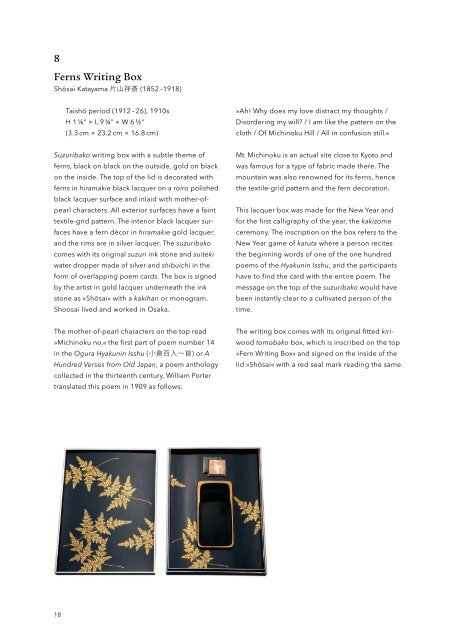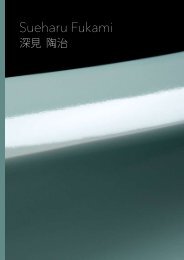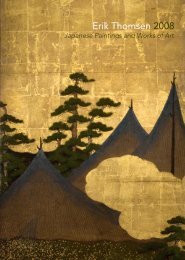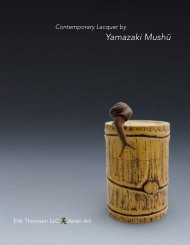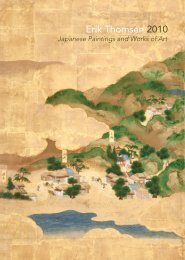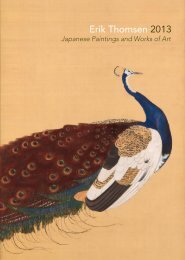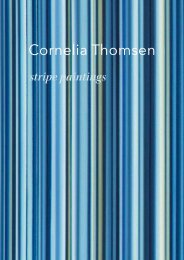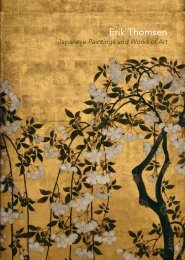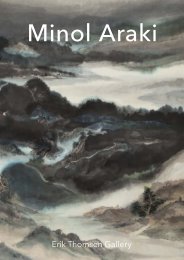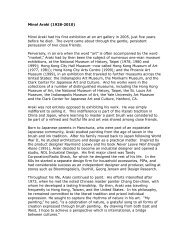Golden Treasures: Japanese Gold Lacquer Boxes - Erik Thomsen
Golden Treasures: Japanese Gold Lacquer Boxes - Erik Thomsen
Golden Treasures: Japanese Gold Lacquer Boxes - Erik Thomsen
Create successful ePaper yourself
Turn your PDF publications into a flip-book with our unique Google optimized e-Paper software.
8Ferns Writing BoxShōsai Katayama 片 山 祥 斎 (1852 –1918)Taishō period (1912 – 26), 1910sH 1 ¼" × L 9 ¼" × W 6 ½"(3.3 cm × 23.2 cm × 16.8 cm)»Ah! Why does my love distract my thoughts /Disordering my will? / I am like the pattern on thecloth / Of Michinoku Hill / All in confusion still.«Suzuribako writing box with a subtle theme offerns, black on black on the outside, gold on blackon the inside. The top of the lid is decorated withferns in hiramakie black lacquer on a roiro polishedblack lacquer surface and inlaid with mother-ofpearlcharacters. All exterior surfaces have a fainttextile-grid pattern. The interior black lacquer surfaceshave a fern décor in hiramakie gold lacquer,and the rims are in silver lacquer. The suzuribakocomes with its original suzuri ink stone and suitekiwater dropper made of silver and shibuichi in theform of overlapping poem cards. The box is signedby the artist in gold lacquer underneath the inkstone as »Shōsai« with a kakihan or monogram.Shoosai lived and worked in Osaka.Mt. Michinoku is an actual site close to Kyoto andwas famous for a type of fabric made there. Themountain was also renowned for its ferns, hencethe textile-grid pattern and the fern decoration.This lacquer box was made for the New Year andfor the first calligraphy of the year, the kakizomeceremony. The inscription on the box refers to theNew Year game of karuta where a person recitesthe beginning words of one of the one hundredpoems of the Hyakunin Isshu, and the participantshave to find the card with the entire poem. Themessage on the top of the suzuribako would havebeen instantly clear to a cultivated person of thetime.The mother-of-pearl characters on the top read»Michinoku no,« the first part of poem number 14in the Ogura Hyakunin Isshu ( 小 倉 百 人 一 首 ) or AHundred Verses from Old Japan, a poem anthologycollected in the thirteenth century. William Portertranslated this poem in 1909 as follows:The writing box comes with its original fitted kiriwoodtomobako box, which is inscribed on the top»Fern Writing Box« and signed on the inside of thelid »Shōsai« with a red seal mark reading the same.18


